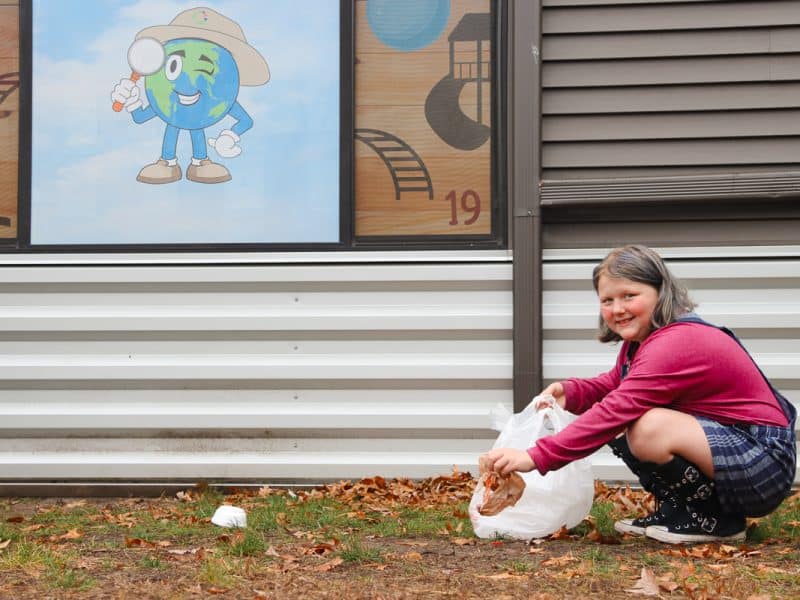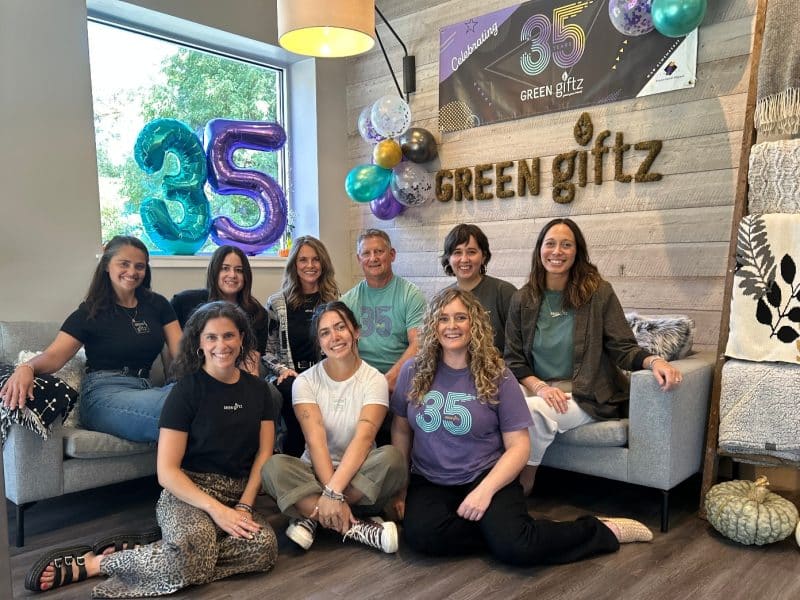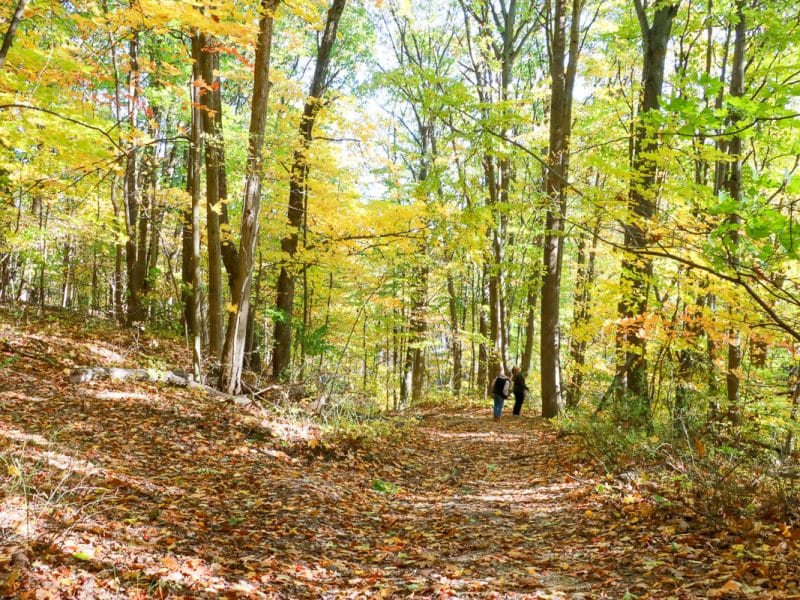Ottawa County Parks paves way for 35-mile pathway from lakeshore to Grand Rapids
After decades of planning and buying property, Ottawa County Parks’ Grand River Greenway is starting to gain real momentum. Though still several years from completion, backers can’t wait for the day residents and visitors can explore this 35-mile pathway and many waterfront parks and destinations along the way.
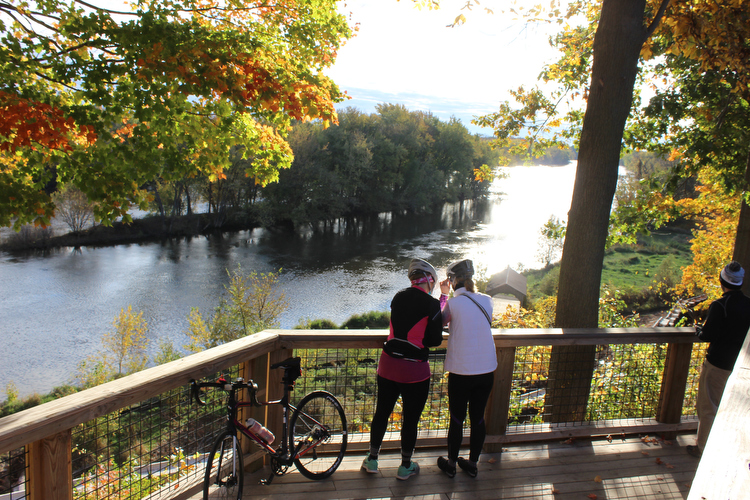
Rich in ecological, cultural, and industrial history, the early Grand River transported Native Americans and fur traders, floated millions of fresh-cut logs downstream for milling, and in more recent years, has seen a resurgence as a recreational waterway for fishing, kayaking, and pleasure boating.
And while the Grand River has become the focus of redevelopment and recreation in Grand Rapids, it’s also been on the radar of park officials in Ottawa County who have worked for the last two decades to buy property and establish riverfront parks in hopes of connecting them via a 35-mile multi-use trail.
The entire $41 million Grand River Greenway project involves buying and protecting thousands of acres of natural land for parks, watersheds, and wildlife habitat. Along with that, the greenway will increase river access with boardwalks and docks, hiking and biking trails, kayak and boat launches, and will connect communities along the river.
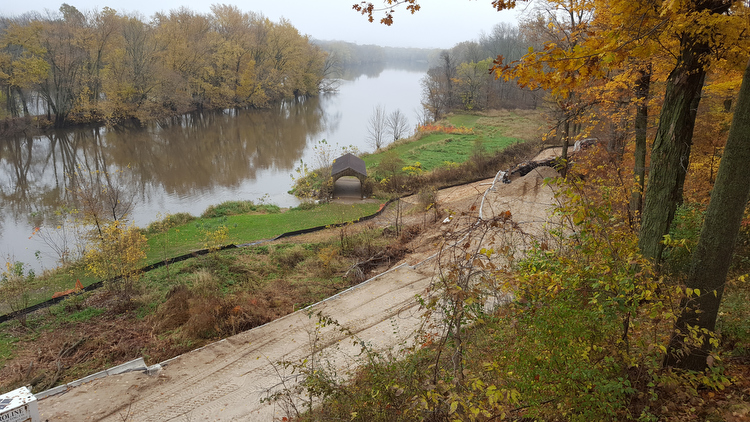
When the Ottawa County parks commission created a master plan in 1989, it included studying the Grand River corridor, along with the Pigeon and Macatawa rivers and greenways, to begin planning for the greenway, according to John Scholtz, director of Ottawa County Parks for the past 30 years. The project gained momentum with the passage of a millage in 1996, and Ottawa County Parks has since purchased over 2,400 acres and created 13 parks and natural areas along the river.
A key feature of the greenway is the development of a non-motorized ADA accessible trail, recently named the Idema Explorers Trail, that will run along the Grand River from Kent County’s Millennium Park to Grand Haven’s pier.
Officials say acquiring the necessary easements, construction, and connecting the Idema Explorers Trail could take another five years, but they are making progress and feel confident that the trail will be a reality.
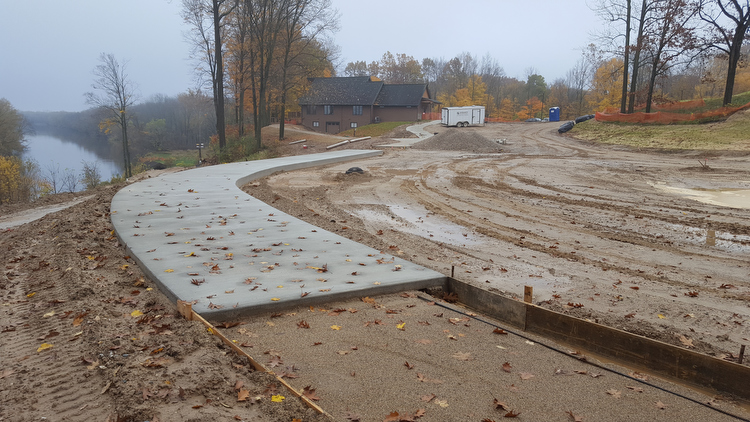
“I want the trail to be as focused on the river as we possible we can,” Scholtz says. “You can’t be on the river everywhere, but it has to have a certain amount of river presence.”
A historian doing research for the project uncovered a graphic from the late 1890s promoting bicycling from Grand Rapids to Grand Haven, so the idea is nothing new, Scholtz says.
“It was talking about taking a bike ride to Grand Haven and all the sites you’d see along the way,” he says. “A lot of the sites they featured were parks that we have. It’s so interesting that someone was talking about this in 1898.”
To move the project along, Ottawa County Parks plans to acquire 700 acres of additional land and develop 27 miles of trail, including 13 miles along or near the river or other water features. The proposed Idema Explorers Trail will offer connections to regional trail systems and other destinations including both Grand Valley State University campuses, downtown Grand Rapids, and Bass River State Recreation Area.
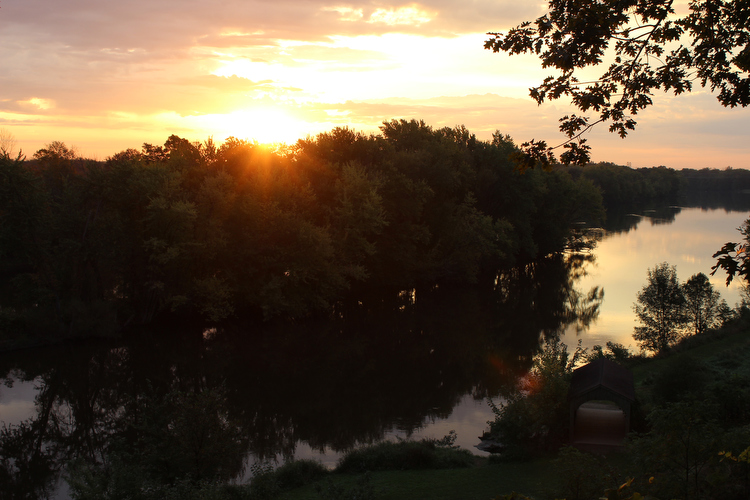
One of the biggest hurdles, besides acquiring land, has been the price tag, with $21 million in funding so far coming from the park millage, state and MDOT grants, and other partnerships. The effort has involved assistance from local, regional, state, and federal agencies to secure over $10 million in public funding and establish the pathway route.
Ottawa County Parks Foundation also launched the Grand River Greenway campaign to raise $7.2 million in philanthropic gifts, necessary to leverage another $10 million in public funding and match grants.
In recent months, the foundation has secured $5.5 million of the projected $7.2 million goal, in part thanks to a $2 million gift from the Bill and Bea Idema Foundation and another $860,000 in grants from The Wege Foundation and Frey Foundation.
“We’re so appreciative of this grant support,” Scholtz says. “It gives people the sense that we can really get this thing done and put this in the final stage of fundraising.”
Longtime supporters of nature, education, and the environment, Bill and Bea Idema also provided financial support for Grand Ravines Park near Grand Valley’s State University’s Allendale campus and key features including $350,000 for a 275-foot suspension bridge, fully ADA accessible and believed to be the state’s longest pedestrian suspension bridge, over one of the park’s ravines.
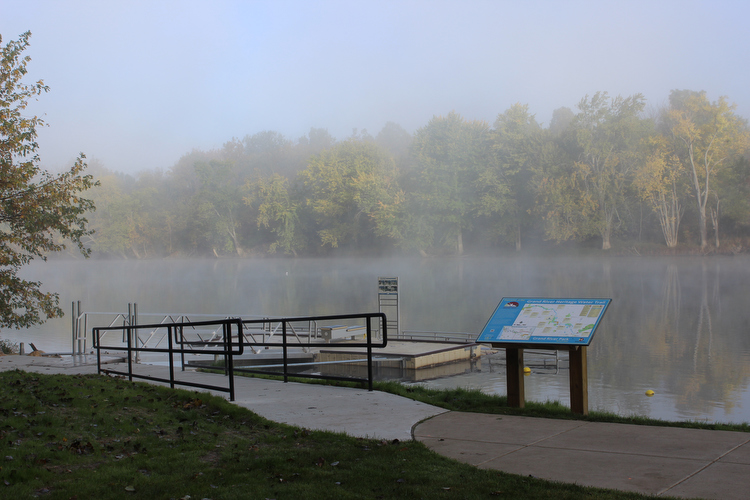
There is also another bike trail being built from Grand Ravines to GVSU, and the park has a lodge, a restored barn and windmill, hiking trails, fishing access, an off-leash dog park, and scenic ravine and river overlooks.
“That’s the center of the trail system,” says Myron Aldrink, a Greenway Campaign committee member whose uncle used to own land that is now part of Grand Ravines Park. “It’s in a beautiful natural setting with deep ravines and the river and creeks flowing in.”
Along the Idema Explorers Trail, planners and funders plan to create a unique trail experience and sense of place through historical markers, interpretive displays, and possibly even sculpture and artwork. Upon completion, the pathway will help tell the story of the Grand River from pre-European settlement, through the logging era to the present.
A committee of volunteers and historians, along with environmental groups and representatives from local Native American tribes, are assisting with the research, design, and development of the interpretive displays. Supporters want to make sure the history, culture, and heritage is captured from the perspective of all the important parties, Aldrink says. Another component of the trail is the hope to restore wildlife and fish habitat, including the sturgeon, to promote a healthy ecosystem.
“What a great thing for the natural environment, saving the land, honoring the cultures and the heritage. It’s really going to be something amazing for the area,” says Aldrink.
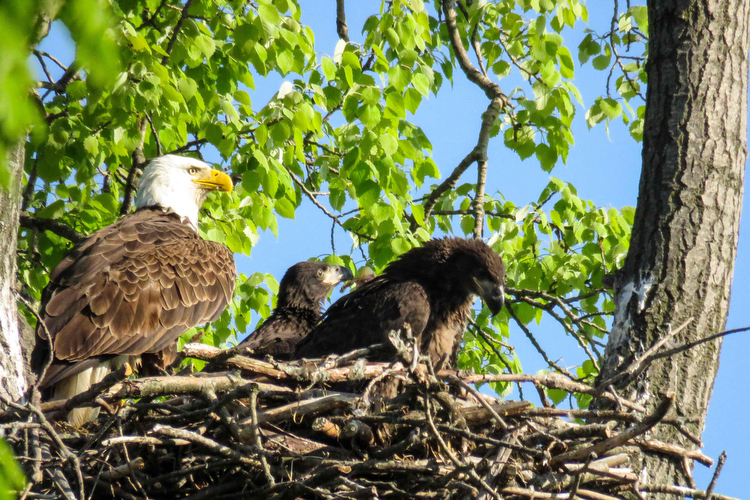
The Idema Explorers Trail will run along the south side of the Grand River, eventually connecting 8,500 acres of public land to Grand Rapids, Grandville, Jenison, and the lakeshore in Grand Haven. MDOT added a separate multi-use lane for pedestrians and bicyclists over the M-231 bridge, which includes a nearby parking lot and scenic overlooks of marsh wetlands, to provide access north and south of the bridge, Scholtz says.
While there is a way to go to connect key linkages, Ottawa County Parks continues to make progress little by little. This spring, construction of the 3.9-mile paved segment in Robinson Township, along the north side of North Cedar Drive, will open and connect Connor Bayou to Riverside Park near Bass River State Recreation Area. It also serves as the southern connection to the new M-231 bridge non motorized trail crossing.
There are other trail sections being planned in Robinson Township that are set to open in 2018 or 2019, including a 42nd Avenue and Ravines connector segment, says Jessica VanGinhoven, Ottawa County Parks communications specialist.
Preliminary design work is underway and easement agreements are being finalized along the trail route. The roughly one-mile segment will be named the Versluis Path after Joyce Versluis, Bea Idema’s niece and another avid supporter of Grand Ravines Park and the greenway.
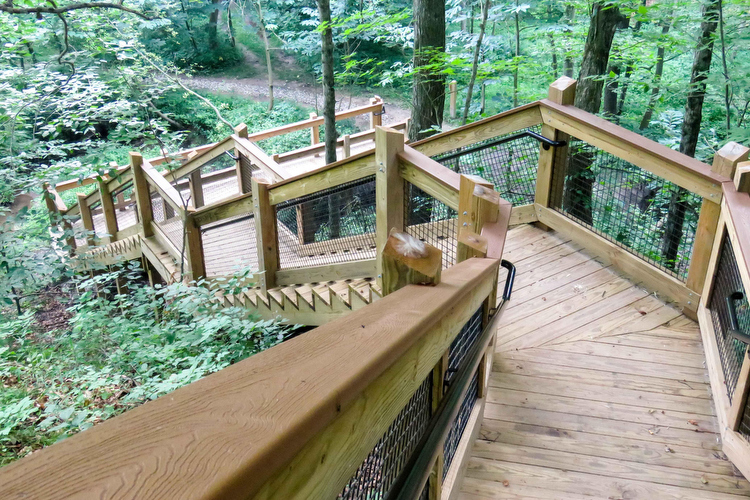
Another two-mile section will run from the Bend Area, down 10th Avenue, which turns into Cottonwood Drive, into Jenison and end close to the Kent County border. The work is being completed along with a road commission project, and Bend Area park will be expanded through funds from the Greenway Campaign and the Michigan Natural Resources Trust Fund, VanGinhoven says.
The Idema Explorers pathway will integrate into West Michigan’s larger regional trail network in Ottawa and Kent counties and beyond, with linkages to nine regional trails, offering a mix of short or long cycling trips for leisure or exercise.
Along the lakeshore, it will connect access to 100 miles of trails in the Grand Haven area, including the 20-mile Lakeshore Trail from Grand Haven to Holland and the 15-mile Lakeside Trail around Spring Lake with connections to the North Bank Trail and Spoonville Trail. Residents and vacationers will be able to ride the trail across the county or do smaller loops in their area, like a loop from Grand Haven to Spring Lake to Nunica and back along the Idema Explorers Trail.
Not limited to the land, the greenway also encourages visitors to enjoy the river via the Grand River Heritage Water Trail, which offers information on places to access the river, stops along the journey, and historical points of interest. Ottawa County Parks has added three universally accessible kayak launches at Grand River Park, Eastmanville Bayou, and Connor Bayou, which are each roughly a two-hour paddle apart, with plans for a fourth farther downstream, Scholtz says.
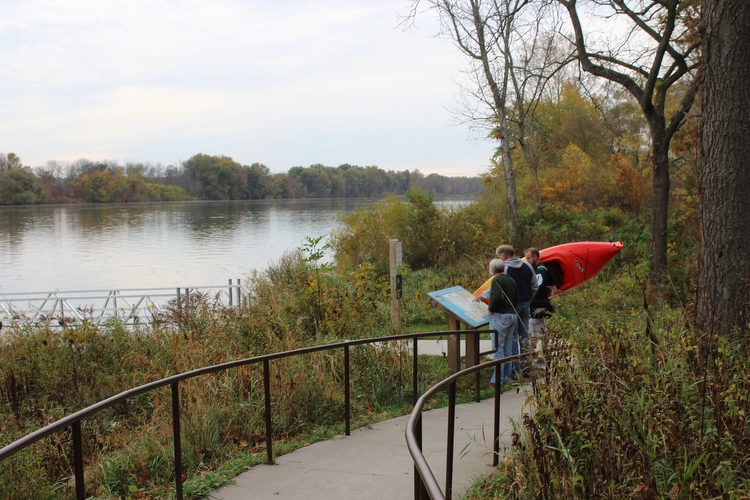
“We’re one of the few places in the state that has a series of these handicap-accessible kayak launches,” he says, noting the launches can be used by anyone to launch or load a kayak via rollers on a ramp that go into water.
Beyond the environmental and recreational impact, backers of the Grand River Greenway see it as boon for the entire region in the way of tourism, community pride, and an attractive amenity for those looking to relocate to the area.
“This is going to be a great connector and really pull together a lot of the valuable assets and really make West Michigan and Grand Rapids a destination place,” Aldrink says.
Greenway Campaign committee members continue to seek additional partners to raise the remaining $1.7 million, including businesses and individuals, and hope the recent activity increases community awareness of the value of the greenway and other parks.
“The foundations have been wonderful and we will be reaching out to the corporations and individuals in the very near future because we do want everyone involved in this,” Aldrink says.
Those who wish to donate can contact the Ottawa County Parks Foundation.
Marla R. Miller is an award-winning journalist and professional writer based in West Michigan. Learn more about her by visiting her website or Facebook.
Images courtesy of Ottawa County Parks.

